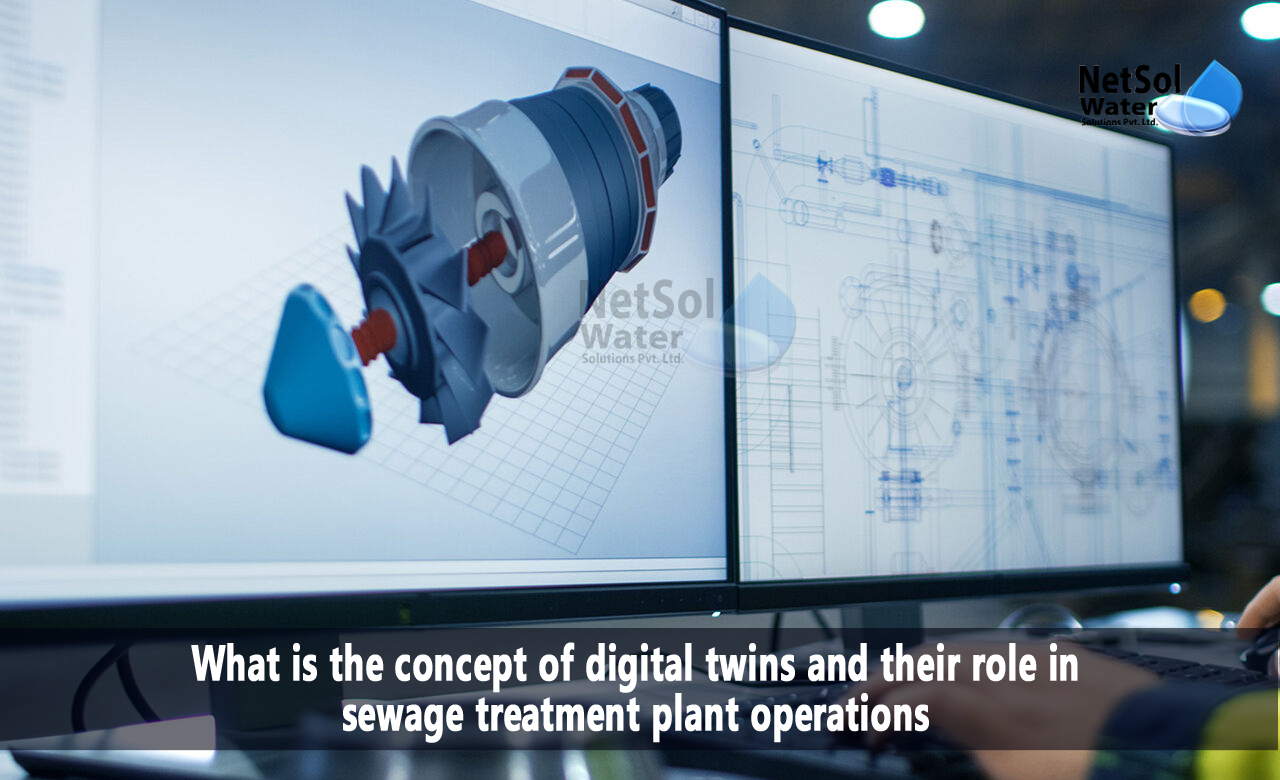What is the concept of digital twins and their role in STP operations?
Sewage treatment plants are vital infrastructure that ensures the proper management and treatment of wastewater. With increasing population and urbanization, the demand for effective sewage treatment solutions is growing. To meet this demand and optimize treatment processes, innovative technologies like digital twins are being employed. Digital twins provide a virtual replica of the physical sewage treatment plant, allowing for simulation, analysis, and optimization of various treatment processes.
In this blog, we will explore the concept of digital twins and their role in simulating and optimizing sewage treatment plant operations.
Understanding Digital Twins
Digital twins are virtual representations of physical objects, systems, or processes. They leverage advanced technologies such as Internet of Things (IoT), artificial intelligence (AI), and machine learning (ML) to create a dynamic digital model that mirrors the real-world counterpart. By collecting and analyzing real-time data from sensors and other sources, digital twins offer valuable insights and predictive capabilities.
Applying Digital Twins to Sewage Treatment Plants
Sewage treatment plants are complex systems with various interconnected processes. Digital twins can provide significant advantages by simulating and optimizing these processes:
- Real-time monitoring and analysis: Digital twins integrate data from sensors placed throughout the treatment plant to provide real-time monitoring of key parameters such as flow rates, pollutant levels, and energy consumption. This allows operators to quickly identify issues, anticipate potential problems, and make informed decisions.
- Process optimization: By simulating treatment processes in a digital environment, operators can test different scenarios, optimize variables, and evaluate the impact of changes without affecting the physical plant. Digital twins enable the identification of optimal operating conditions, leading to improved efficiency, reduced energy consumption, and enhanced treatment performance.
- Predictive maintenance: Digital twins enable predictive maintenance by continuously monitoring equipment performance and analyzing data patterns. By detecting anomalies and potential failures early on, maintenance activities can be planned proactively, minimizing downtime and reducing maintenance costs.
- Training and decision support: Digital twins provide a valuable platform for training operators and decision-makers. By creating a realistic virtual environment, operators can practice different scenarios, improve their skills, and enhance their understanding of complex processes. Additionally, decision-makers can use digital twins to evaluate the impact of potential changes or investments before implementation.
Benefits of Digital Twins in Sewage Treatment Plants
- Enhanced operational efficiency: Digital twins enable operators to optimize treatment processes, reduce energy consumption, and enhance overall operational efficiency. By identifying inefficiencies and bottlenecks, operators can make data-driven decisions to streamline operations.
- Improved treatment performance: With digital twins, operators can simulate and analyze treatment processes, leading to improved treatment performance. By understanding the impact of various parameters and optimizing them, sewage treatment plants can achieve better effluent quality and meet regulatory requirements more effectively.
- Cost savings: Digital twins help optimize resource utilization, energy consumption, and maintenance activities, resulting in significant cost savings. By identifying inefficiencies and reducing downtime, operators can minimize operational costs and maximize the lifespan of equipment.
- Sustainable operations: The use of digital twins in sewage treatment plants aligns with sustainability goals. By optimizing processes and reducing energy consumption, digital twins contribute to environmental stewardship and the efficient use of resources.
Conclusion
Digital twins offer immense potential in simulating and optimizing sewage treatment plant operations. By creating virtual replicas of physical plants and leveraging real-time data, operators can monitor, analyze, and optimize treatment processes. This technology enhances operational efficiency, improves treatment performance, and contributes to sustainable and cost-effective operations. As the demand for effective sewage treatment solutions continues to rise, digital twins will play a crucial role in ensuring efficient and optimized wastewater management.



